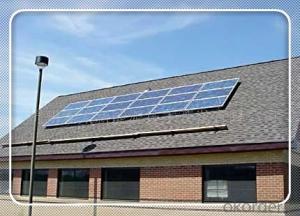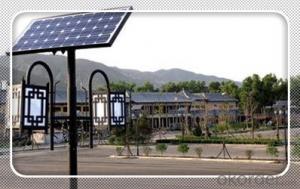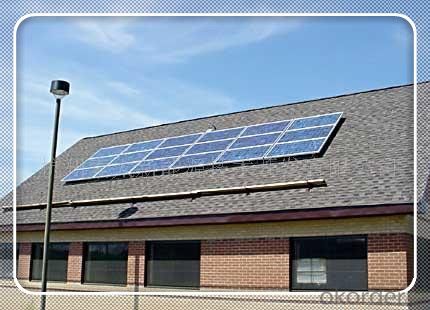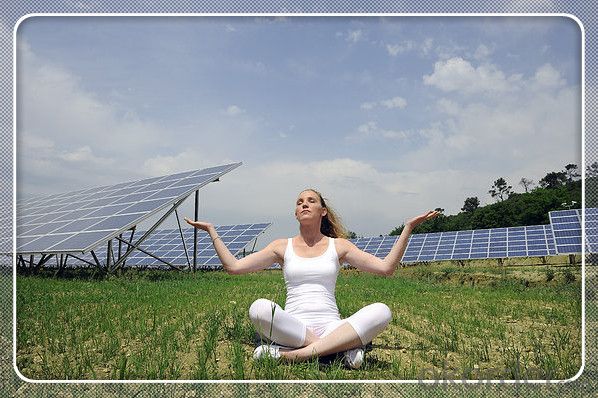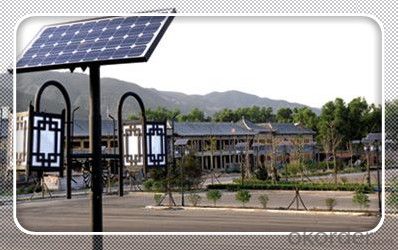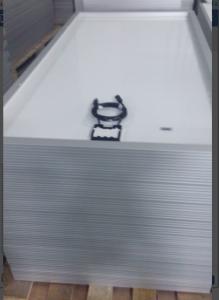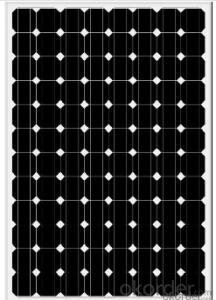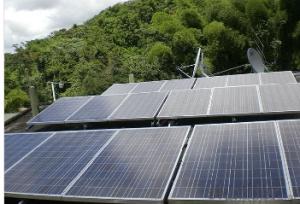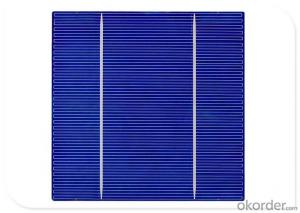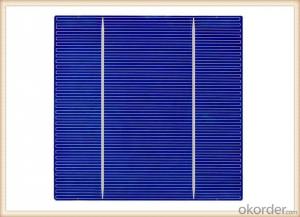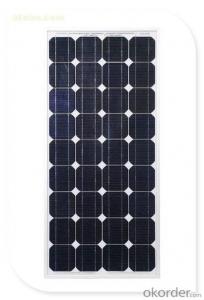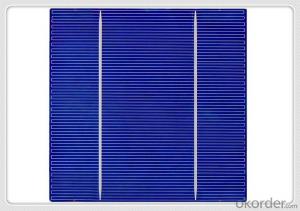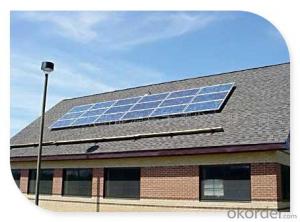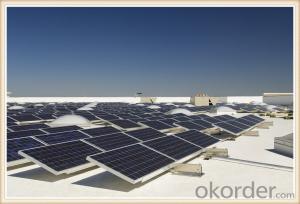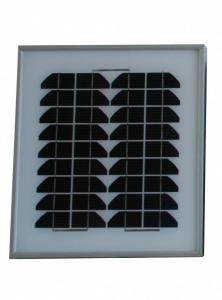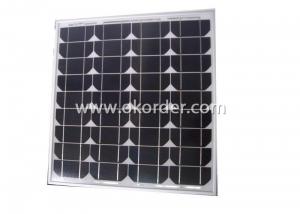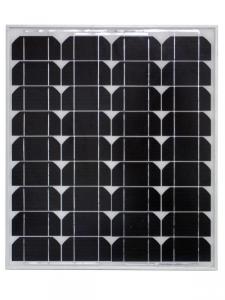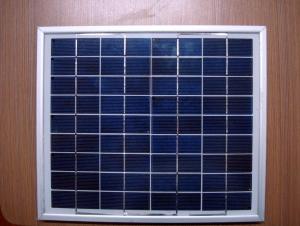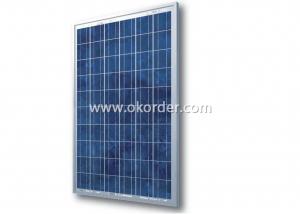Sunspark Solar Panels - 40W Efficiency Chinese Solar Panels for Sale 5-200W
- Loading Port:
- China main port
- Payment Terms:
- TT OR LC
- Min Order Qty:
- 10000 watt
- Supply Capability:
- 100000 watt/month
OKorder Service Pledge
OKorder Financial Service
You Might Also Like
Specification
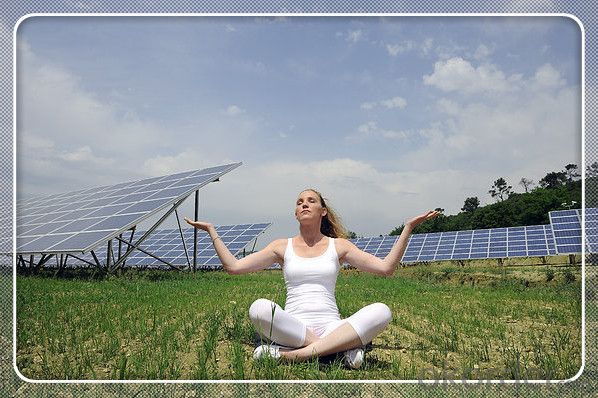
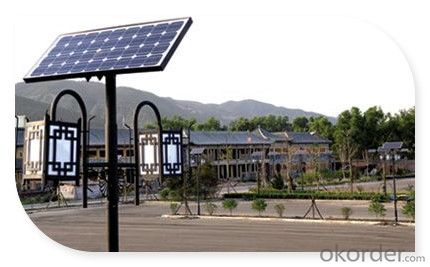
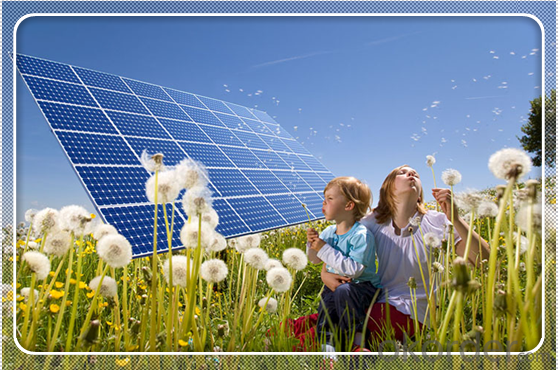
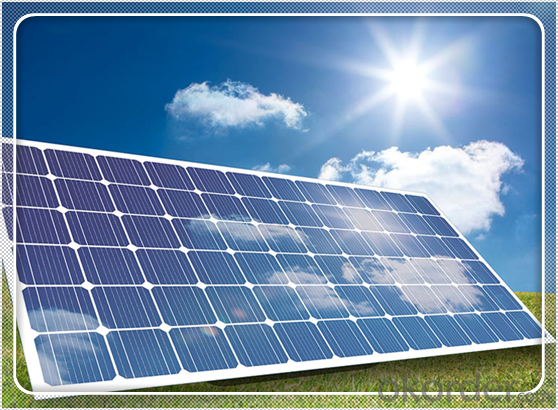
Solar Module Introduction
Solar Module is the core part of solar PV power systems, also is the highest value part of it. The function of Solar Module is to convert the sun's radiation to electrical energy, or transfer it to battery and store in it, or to drive the load running.
The Product has been widely used in space and ground, it mainly used for power generation systems, charging systems, road lighting and traffic signs areas. It could offer a wide range of power and voltage, and with high conversion efficiency, and long service life.
Solar modules use light energy (photons) from the sun to generate electricity through the photovoltaic effect. The majority of modules use wafer-based crystalline silicon cells or thin-film cells based on cadmium telluride or silicon. The structural (load carrying) member of a module can either be the top layer or the back layer. Cells must also be protected from mechanical damage and moisture. Most solar modules are rigid, but semi-flexible ones are available, based on thin-film cells. These early solar modules were first used in space in 1958.
Electrical connections are made in series to achieve a desired output voltage and/or in parallel to provide a desired current capability. The conducting wires that take the current off the modules may contain silver, copper or other non-magnetic conductive transition metals. The cells must be connected electrically to one another and to the rest of the system. Externally, popular terrestrial usage photovoltaic modules use MC3 (older) or MC4 connectors to facilitate easy weatherproof connections to the rest of the system.
Secification
Model Type | |
Peak Power-Pmax(W) | 5-200W |
Open Circuit Voltage-Voc(V) | 44.2 |
Maximum Power Voltage-Vmp(V) | 36 |
Short Circuit Current-Isc(A) | 5.4 |
Maximum Power Current-Imp(A) | 5 |
Maximum System Voltage | 1000V DC |
Maximum Series Fuse Rating | 10A |
Power Tolerance | -1~+3% |
Temperature Coefficients of Pmax | -0.45%/℃ |
Temperature Coefficients of Voc | -0.348%/℃ |
Temperature Coefficients of Isc | 0.031%/℃ |
Nominal Operating Cell Temperature | 44.5±2℃ |
Standard Testing Condition(STC) | Irradiance:1000W/m²;Temperature:25℃;AM=1.5 |
Qualification Test Parameters | |
Operating Temperature | -40℃~+85℃ |
Storage Temperature | -40℃~+85℃ |
Pressure Bearing | ≥5400Pascal/m² |
Wind Bearing | ≥5400Pascal/m² |
Mechanical Characteristics | |
Cell Size | Mono 125*125mm±0.5 |
No.of Cells | 72pcs(6*12) |
Dimension | 1580*808*40mm |
Weight | 15.5Kg |
Glass | 3.2mm High Transmission,Low Iron |
Frame | Anodized Aluminum Alloy |
Junction Box | IP65Rated |
Internal Diodes | 3 Bypass Diodes |
Cable | 1*4.0mm² Length 900mm |
Images
Packing & Shipping:
We have rich experience on how to pack the panels to make sure the safety on shipment when it arrives at the destination.
The normal size is packed by 25pcs/ carton / pallet. Paper carton for FCL shipping and wood carton for LCL shipping.
Warranty:
For c-Si panel: 25years output warranty for no less than 80% of performance, 10 years output warranty for no less than 90% of performance. Free from material and workmanship defects within 5 years.
For a-Si panel: 20 years output warranty for no less than 80% of performance, 10 years output warranty for no less than 90% of performance. Free from material and workmanship defects within 2 years.
FAQ:
(1)What price for each watt?
It depends on the quantity, delivery date and payment terms.
(2)What is your size for each module? Can you tell me the Parameter of your module?
We have different series of panels in different output, both c-Si and a-Si. Please take the specification sheet for your reference.
(3)Can you provide the peripheral products of the solar panels, such as the battery, controller, and inverter? If so, can you tell me how do they match each other?
Actually we are only manufacturer of solar panels, but we could try to source them for you in China if you need. We could provide you an optimal system design to instruct you how to install.
(4)Do you have the CE, TUV, UL Certification?
We’ve already passed all the tests, and any certificate is available.
(5)Have you ever sold your products to companies in my country?
Of course, we have customers in all general PV markets, but I think we should expand our market share along with the market growth.
(6)When did your company set up? You are a new company, how can I believe your quality?
We entered into Solar PV industry in 2005, now we have several plants in manufacturing of a-Si and c-Si panels, and our capacity is 220MW per year. Till now we have already passed all the tests by authorized laboratories, e.g. TUV, VDE, UL.
(7)Can you help us install the module if we cooperate with you?
We haven’t entered into installation sector, but we have the plan in near future.
(8) How do you pack your products?
We have rich experience on how to pack the panels to make sure the safety on shipment when it arrives at the destination.
(9) Can you do OEM for us?
Yes, we can.
(10)Can we visit your factory?
Surely, I will arrange the trip basing on your business schedule.
- Q: I'm about to buy one but I don't really know which one is best for my home.
- Talk okorder has good info. What state are you in?
- Q: Can solar panels be used for powering a manufacturing facility?
- Yes, solar panels can be used to power a manufacturing facility. Solar panels convert sunlight into electricity, which can be utilized to run various equipment and processes within a manufacturing facility. By installing a sufficient number of solar panels, a manufacturing facility can significantly reduce its reliance on traditional grid electricity and lower its carbon footprint. However, the feasibility and effectiveness of solar panels for powering a manufacturing facility would depend on factors such as the facility's energy requirements, available sunlight, and the size of the solar panel system installed.
- Q: my solar car works when using the Battery but when there is sunlight i connect the wires to the solar panel and it does not work...................HELP
- leave the car in the sun for a few hours to see if it charges. if not, the panel is defective. get it replaced b4 the science fair
- Q: Can solar panels be installed on asphalt shingles?
- Yes, solar panels can be installed on asphalt shingles. However, it is important to ensure that the shingles are in good condition and can support the weight of the panels. Proper installation techniques and mounting systems designed for asphalt shingles should be used to prevent any damage to the roof.
- Q: I am told there are night vision goggles to see at night due to invisible light still hitting earth. I am also told that there are other beams, x-rays etc hitting earth.Why couldn't they invent a solar panel with dual power in the day?It could harness both visible and invisible light, and at night be single?Anyone know why they can't make an invisible light solar panel?Is this possible?What happens if future cars have night vision windshields instead of lights?
- They are actually working on building photovoltaic panels (Photovoltaic is actually the correct term for sunlight--electricity. Ordinary solar panels are those that use sunlight to heat water) that harness a larger range of wavelengths. From what I can gather the problem is either finding a material that absorbs more wavelengths, or finding a way to get multiple materials to coexist in a single panel. This situation will no doubt improve over time as new things like Nanotechnology give us the ability to create much more complex substances designed at the molecular level for light capture. Panels that can harness a wider range of the spectrum do exist, but the technology is in its infancy, and therefore expensive and not widely known. This isn't too surprising when you consider that Photovoltaic technology itself hasn't been in the mainstream all that long. I am a bit doubtful of photovoltaics that work at night, for the simple reason that at night there is less of *every* kind of energy falling on earth. Less visible light, infrared, etc. Infrared just happens to be particularly good at giving away hot objects, which is how Night Vision goggles work. For the same reason, a night vision windshield might be a very useful tool, but it would still have difficulty picking out colder objects, and those that reflected less infrared light. In other words, you might see cars and pedestrians, but you could easily miss the upcoming embankment 0.o .
- Q: i want to charge my mytouch 3g with solar panel(s) it has a 500mah 3.7v 4.4wh batterieswhat do i need to charge it can i use RadioShack 0.5W Solar Panel 4.5V or RadioShack? W Solar Panel 4.5V
- see u have to make ur own ckt for this ur solar panel generate DC if u want to charge ur phine then its convenient way to harge with ur charger for this do this search for net to convert DC-AC convertor since ur charger work on AC so when ur solar panel generate DC it convert into AC that will charge ur phone in ckt u need this thing filter and amp ie the DC voltage come from solar panel 2 DC to AC convertor 3 AMP for AC 4 filter for AC and u are done....... fine ckt from google.....
- Q: Can solar panels be used for powering a wastewater treatment plant?
- Yes, solar panels can be used for powering a wastewater treatment plant. Solar energy can be harnessed and converted into electricity, which can then be used to power the various components and processes involved in wastewater treatment. This renewable energy source helps reduce reliance on non-renewable fuels, lowers operational costs, and minimizes the environmental impact of the treatment plant.
- Q: Can solar panels be installed on mountain huts or lodges?
- Yes, solar panels can be installed on mountain huts or lodges. In fact, mountainous regions with ample sunlight can be ideal locations for solar panel installations. These panels can harness the sun's energy and convert it into electricity, providing a sustainable and reliable source of power for the huts or lodges.
- Q: Can solar panels be installed on a warehouse or storage facility?
- Yes, solar panels can be installed on a warehouse or storage facility. In fact, warehouses and storage facilities are often ideal locations for solar panel installations due to their large, flat rooftops and ample space for arrays. Installing solar panels can help these facilities reduce their electricity bills, lower their carbon footprint, and even generate additional income through various incentive programs.
- Q: How much electricity can a solar panel generate?
- The amount of electricity a solar panel can generate depends on various factors such as the size and efficiency of the panel, the amount of sunlight it receives, and the location. On average, a standard solar panel can produce anywhere from 250 to 400 watts of electricity per hour.
Send your message to us
Sunspark Solar Panels - 40W Efficiency Chinese Solar Panels for Sale 5-200W
- Loading Port:
- China main port
- Payment Terms:
- TT OR LC
- Min Order Qty:
- 10000 watt
- Supply Capability:
- 100000 watt/month
OKorder Service Pledge
OKorder Financial Service
Similar products
Hot products
Hot Searches
Related keywords
